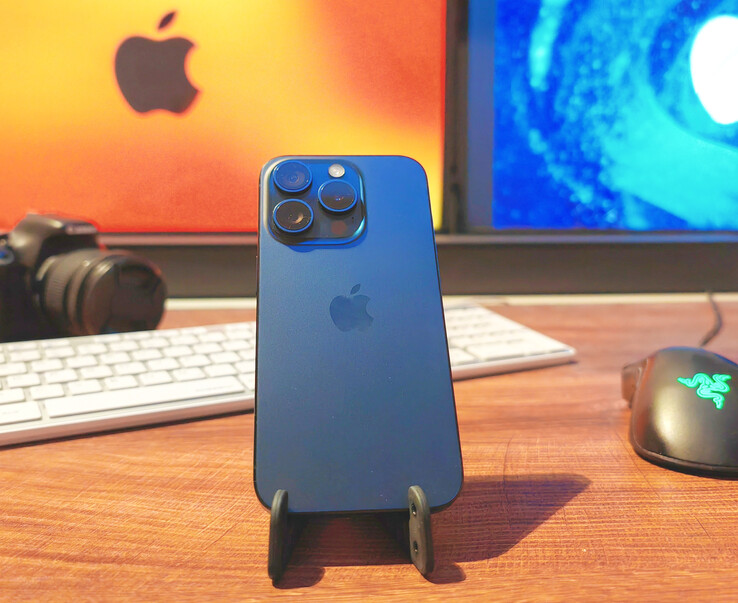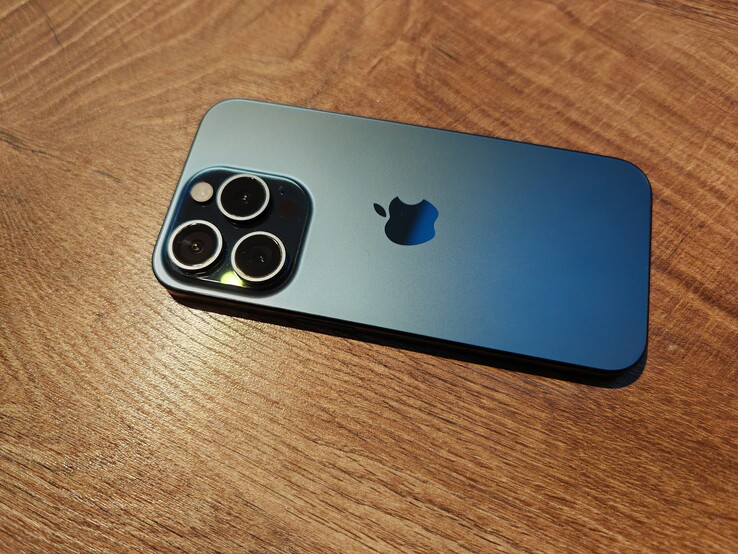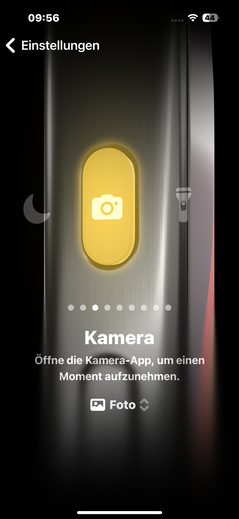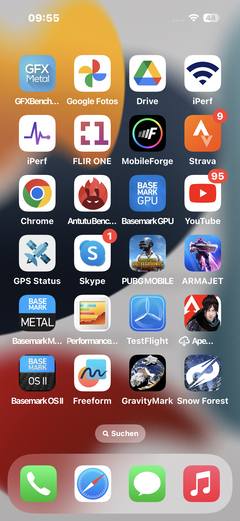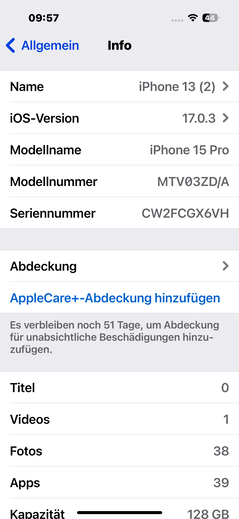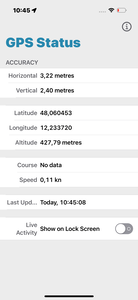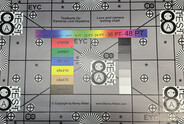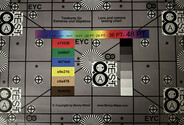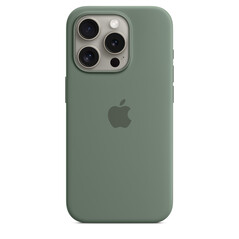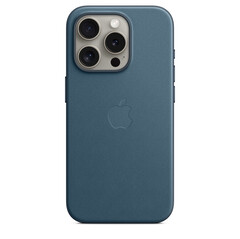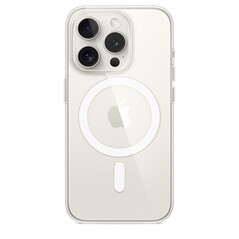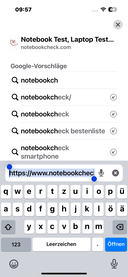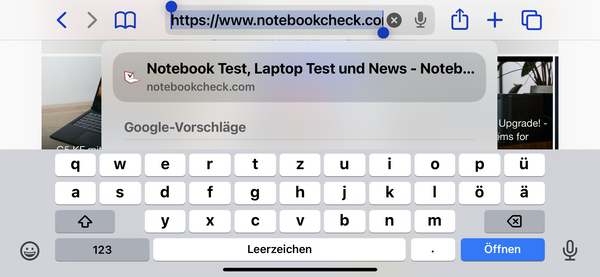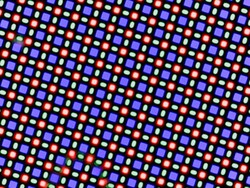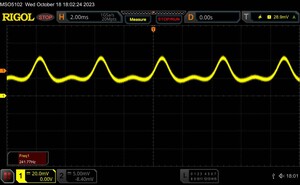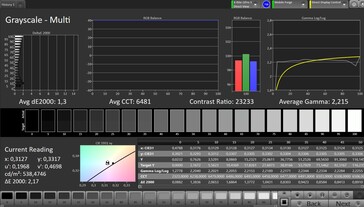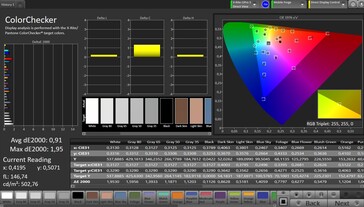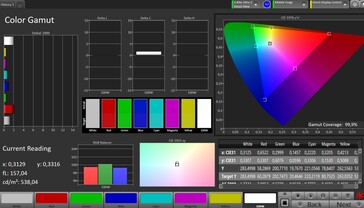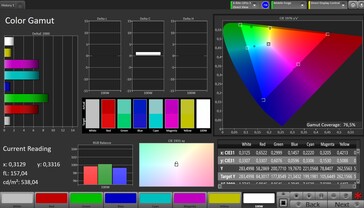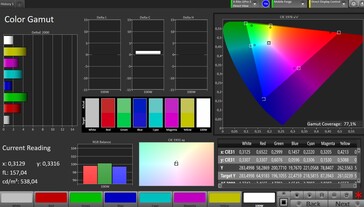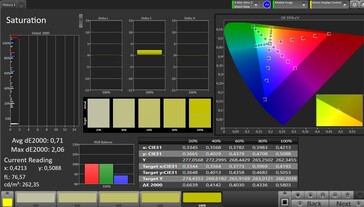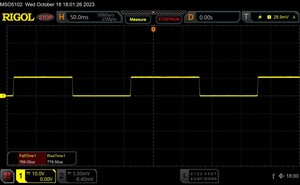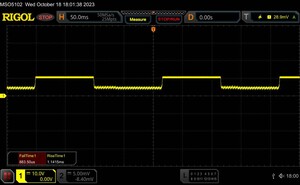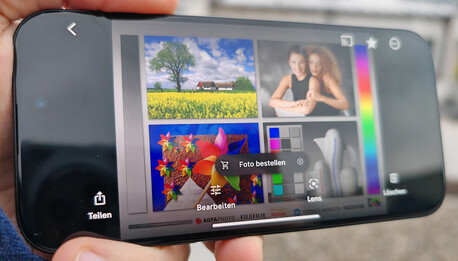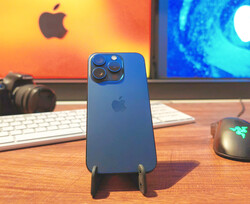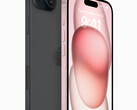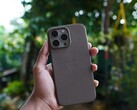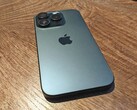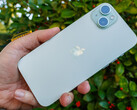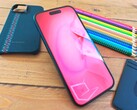Apple iPhone 15 Pro smartphone in review - High-end phone as a replacement for the PlayStation?
Every year, Cupertino, California, delivers new iPhones to the world, typically in several variants and sizes. And each year, a new iOS version is released that brings new features. This time, Apple is introducing a gaming project that will include native versions of popular AAA titles that are generally reserved for PCs or consoles.
The bigger iPhone 15 Pro Max has previously been tested by us. The review now focuses on the Apple iPhone 15 Pro, which distinguishes itself through its titanium body and a GPU that supports ray tracing, two noteworthy advancements.
Historically, Apple's smartphones have performed well in our tests. Nevertheless, we put the iPhone 15 Pro through the same rigorous testing as any other smartphone. Let's dive in.
Potential Competitors in Comparison
Rating | Date | Model | Weight | Drive | Size | Resolution | Price |
|---|---|---|---|---|---|---|---|
| 90.7 % v7 (old) | 10 / 2023 | Apple iPhone 15 Pro A17 Pro, A17 Pro GPU | 187 g | 128 GB NVMe | 6.10" | 2556x1179 | |
| 90.3 % v7 (old) | 01 / 2023 | Apple iPhone 14 Pro A16, A16 GPU 5-Core | 206 g | 256 GB NVMe | 6.10" | 2556x1179 | |
| 89.2 % v7 (old) | 03 / 2023 | Xiaomi 13 Pro SD 8 Gen 2, Adreno 740 | 229 g | 256 GB UFS 4.0 Flash | 6.73" | 3200x1440 | |
| 89 % v7 (old) | 09 / 2023 | Sony Xperia 5 V SD 8 Gen 2, Adreno 740 | 182 g | 128 GB UFS 3.1 Flash | 6.10" | 2520x1080 | |
| 90.5 % v7 (old) | 03 / 2023 | Samsung Galaxy S23 SD 8 Gen 2 for Galaxy, Adreno 740 | 167 g | 128 GB UFS 3.1 Flash | 6.10" | 2340x1080 |
Case – Titanium reinforced aluminum frame
Apple relies on titanium as the primary material for its iPhone 15 Pro, with the frame predominantly constructed from recycled aluminum to which a thin titanium layer is applied through diffusion welding. Titanium, known for its strength and lightness, enables Apple to achieve a nearly 10% reduction in weight compared to the iPhone 14 Pro. The iPhone 15 Pro is 0.05 lbs lighter than its predecessor but still heavier than a Samsung Galaxy S23.
The phone's width and length have been decreased by 0.03 inches, though it is now around 0.02 inch thicker due to the camera module protruding more from the casing. The enclosure is beautifully constructed.
Notably, the iPhone 15 Pro features softer edges than its predecessor, enhancing its grip and comfort. The back panel, made of matte glass and adorned with a glossy Apple logo, exudes elegance. Additionally, Apple utilizes its Ceramic Shield on the front to protect the display against scratches and cracks. The entire phone is dust and water-resistant, complying with IP68 standards and IEC standard 60529, allowing it to be submerged in water up to 19.7 ft deep for 30 minutes.
In addition to white and black, the iPhone 15 Pro is available in Titanium Nature, a somewhat golden metallic tone. Our test gadget arrived in the fourth color option, a gleaming metallic blue.
Connectivity – The prices have dropped
US prices are as follows:
- 128 GB storage: $999 USD
- 256 GB storage: $1099 USD
- 512 GB storage: $1299 USD
- 1 TB storage: $1499 USD
All models include 8 GB of memory.
Under EU pressure, Apple has included a USB-C connector in the 15th-generation iPhone. This change not only assures compatibility with a wide range of chargers but also mandates the use of an adapter for older accessories that use a Lightning connector. The new USB-C connector can transmit data at up to 10 GBit/s, bringing it in line with other high-end devices. Furthermore, HDR video output and resolutions up to 4K are now enabled, which is a big upgrade over the prior Lightning port's limits.
Although internal storage expansion via microSD remains unavailable, external storage devices can be connected through the iPhone's USB-C port.
Software – Presumably long-term updates
iOS 17 is the latest version of Apple's mobile operating system. While Apple has historically provided updates for its iPhones for at least 5 years, the company does not make an official statement regarding the duration of updates.
This approach reinforces Apple's closed ecosystem: many practical features work seamlessly when combined with other Apple devices. On a Windows PC, you can access photos or videos taken with your iPhone and synchronize media libraries or create backups via iTunes. However, the experience is much smoother on a Mac. Apps like iMessage and the new customizable caller appearance are exclusive to iPhones.
The latest version of Apple's operating system introduces numerous updates and new functions for both the operating system and included apps. For example, you can now share your estimated time of arrival at any location with other iPhone owners via location. If you arrive at or move away from the destination, notifications are sent accordingly.
The Health app now allows you to focus more on your mental well-being. In various parts of the phone, you are prompted to confirm if you want to view sensitive content such as nude pictures, or you can take a blurred preview to know what to expect.
Search criteria in the search function may now be combined for even more detailed queries. Visit Apple's website for a detailed list of all the advances.
The USB-C port is DisplayPort-enabled, enabling you to connect the iPhone 15 Pro to a monitor. There is currently no dedicated desktop mode; instead, the iPhone's screen is mirrored.
Communication und GNSS – iPhone 15 Pro with 6 GHz WLAN
Finally, the iPhone 15 Pro is equipped with WiFi 6E, allowing it to access the less crowded 6 GHz band for Wi-Fi. Our test device achieves considerably higher speeds than the iPhone 14 Pro with WiFi 6 due to the absence of older devices causing interference in the frequency spectrum and the availability of additional 160 MHz channels. As a result, if the server allows it, the iPhone 15 Pro may fully use the speed potential of a gigabit Internet connection.
We achieved speeds of up to 1543 MBit/s during our tests using the Asus ROG Rapture AXE11000 as a reference router. The transfer rates remained consistently stable, always well above 1 GBit/s. Despite its metal casing, the iPhone maintains good reception thanks to antennas attached to the device's four narrow sides, appearing as thin strips. When close to the router, the iPhone achieves full signal strength, leading to almost immediate website loading; even images are nearly always available while scrolling. At a distance of 33 ft and through three walls, the reception decreases to 2/3, resulting in slightly slower page loading times.
The mobile modem featured in the iPhone 15 Pro is Qualcomm's Snapdragon X70, boasting a maximum download speed of 10 GBit/s. For the first time, it utilizes artificial intelligence to optimize both speed and reception quality within the 5G network. Theoretically, the iPhone 15 Pro supports all presently used 5G frequencies globally; however, mmWave technology remains exclusive to Apple customers in the US. Furthermore, the device offers extensive frequency coverage within the 4G range, enabling it to access mobile internet services worldwide.
| Networking | |
| Apple iPhone 15 Pro | |
| iperf3 transmit AXE11000 6GHz | |
| iperf3 receive AXE11000 6GHz | |
| Apple iPhone 14 Pro | |
| iperf3 receive AXE11000 | |
| iperf3 transmit AXE11000 | |
| Xiaomi 13 Pro | |
| iperf3 receive AXE11000 | |
| iperf3 transmit AXE11000 | |
| iperf3 transmit AXE11000 6GHz | |
| iperf3 receive AXE11000 6GHz | |
| Sony Xperia 5 V | |
| iperf3 receive AXE11000 | |
| iperf3 transmit AXE11000 | |
| Samsung Galaxy S23 | |
| iperf3 receive AXE11000 | |
| iperf3 transmit AXE11000 | |
| iperf3 transmit AXE11000 6GHz | |
| iperf3 receive AXE11000 6GHz | |
| Average of class Smartphone | |
| iperf3 receive AXE11000 | |
| iperf3 transmit AXE11000 | |
| iperf3 transmit AXE11000 6GHz | |
| iperf3 receive AXE11000 6GHz | |
The iPhone's tracking module can accurately pinpoint our location within about 33 ft indoors and achieve an accuracy of 6.5 to 13 ft outdoors and supports all global satellite networks.
We tested the phone's tracking accuracy during a bike ride, comparing it with the Garmin Venu 2 smartwatch.
During testing, the iPhone 15 Pro performed admirably, even recording minor evasive movements. The recorded route deviated only when crossing a bridge over water. Overall, we highly recommend the Apple smartphone for demanding tracking tasks.
Phone features and voice quality
The iOS phone app is well-organized and user-friendly, offering intuitive navigation. Nevertheless, unlike Android, it cannot be replaced if you are not satisfied with it.
The iPhone 15 Pro supports dual-SIM functionality, but it features only one nano-SIM slot. Consequently, users can use either a nano-SIM and an eSIM or two eSIMs.
We appreciate the excellent voice quality of the Apple smartphone. The other party's voice comes through clearly and distinctly. The microphone also captures our voice effectively. It might get slightly distorted if we speak too loudly, but it handles soft voices exceptionally well. When using the speaker and the hands-free microphone, the other person's voice is easily understood, and ours is relayed clearly. The background noise, however, is not always completely eliminated.
Cameras - 3x optical zoom again
The cameras remain the same as in the iPhone 14 Pro this year, with the addition of a LiDAR sensor on the rear.
The primary back camera still boasts a resolution of 48 megapixels and optical image stabilization. Apple introduced the new Photonic Engine, allowing the camera to capture images at full resolution and another at a reduced pixel count but optimized exposure. These images are then combined to create a 24-megapixel photo. Additionally, there's a new feature allowing for 48-megapixel HEIF shots, which can be instantly shared.
For enhanced versatility, the phone includes a wide-angle camera and a telephoto lens with optical zoom capability, providing users with a choice of three lenses. Similar to its predecessor, users can opt for a 3x optical zoom, extendable up to 15x through digital zoom. The camera allows seamless transitions between individual zoom levels in increments of 0.1.
The main camera's image quality impresses with its detailed shots and true-to-life color reproduction. Even challenging areas, such as cloudy skies in the surroundings, are displayed in intricate detail. Devices like the Honor Magic5 Pro have been seen to be able to gather a bit more details. The varying vibrancy of colors between photos from the two smartphone cameras is subjective and a matter of personal preference.
The optical zoom delivers excellent display performance, and even with the 15x digital zoom, the resulting images remain visible. The picture was captured from a distance of approximately 16 ft away from the fountain pipe.
Wide-angle shots are well-lit and offer sufficient detail, although enlarging them too much is not recommended. They still perform well in very low light and high-contrast situations, capturing good pictures. The night mode automatically activates with a 2-second exposure time, which can be manually extended or shortened. While many details appear sharp with the system's selected setting, a bit more exposure in darker areas could enhance the overall quality.
For those who prefer more control, photos can also be taken in ProRAW format, allowing adjustments to factors like exposure after the shot. Apple provides several options in the video department, enabling users to record 4K videos at 24, 30, or 60 frames per second. In video mode, continuous zooming in and out, ranging from wide-angle to a 15x digital zoom, is possible during recording.
Moreover, the iPhone 15 Pro now supports the Academy Color Encoding System, a global color standard for cinema productions. Additionally, it will receive an update in the future that includes the option for spatial video recordings, which can later be experienced with VR glasses.
Image comparison
Choose a scene and navigate within the first image. One click changes the position on touchscreens. One click on the zoomed-in image opens the original in a new window. The first image shows the scaled photograph of the test device.
Hauptkamera BlumeHauptkamera UmgebungHauptkamera Low LightWeitwinkelkameraDuring our tests, we examined the main camera under both full studio lighting and extreme low-light conditions of only 1 lux. In well-lit conditions, the iPhone 15 Pro captures good images, although there is a slight drop in sharpness towards the edges. Even in very low light, the images remain quite recognizable, displaying only minimal loss of sharpness.
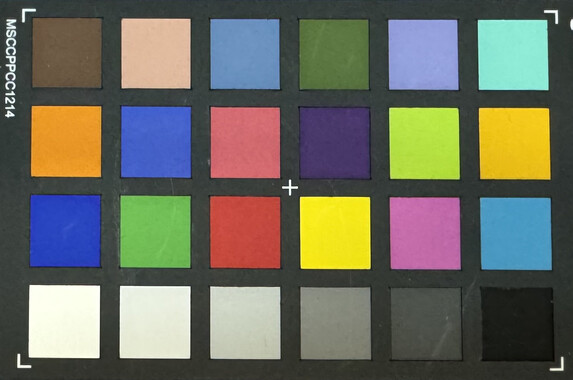
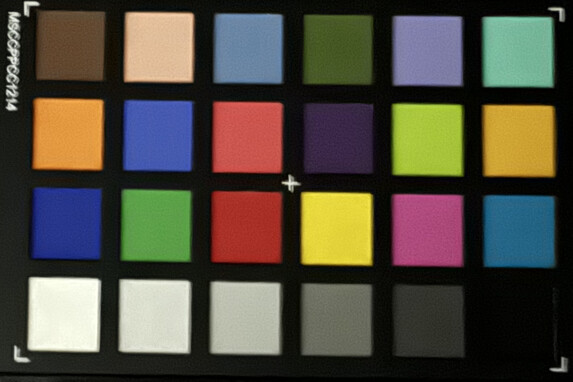
Accessories and warranty - Delivery without the power supply unit
In addition to the iPhone, the package includes only a USB-C to USB-C cable, a SIM tool, as well as paperwork and stickers. A drawback: the provided cable supports only the USB 2.0 standard, making it unsuitable for tasks like connecting to a monitor.
Thanks to the USB-C port, the iPhone now supports a wider range of chargers. Apple offers a compatible charger for $19 USD. Alternatively, users who prefer MagSafe charging can purchase a corresponding charger for $39 USD.
As for cases, options include a clear case or colored silicone cases available for $49 USD in the Apple Store. New additions are the FineWoven cases that mimic suede, priced at $59 USD.
Apple provides a standard 12-month warranty for iPhones.
Customers can opt for AppleCare+, an extended warranty service covering damages for two years, even if the standard warranty has expired or accidental damages occur. This additional service starts at ~$249 USD, with a deductible applied in case of repairs.
Input devices & operation - Action button instead of slider
The touchscreen on the iPhone 15 Pro can display up to 120 frames per second, providing a remarkably smooth user experience. It is highly reliable, and responsive even at the edges and corners, ensuring efficient use.
While there isn't a fingerprint sensor for biometric unlocking, Face ID takes its place. This feature utilizes three-dimensional face recognition, making manipulation extremely challenging. The iPhone promptly and accurately recognizes a registered face.
In the past, iPhones had a unique alert slider allowing quick muting or volume adjustment for notifications and calls. This has now been replaced by the action button.
While it can still be used to mute the phone by default, it also offers the flexibility to launch the camera or activate the flashlight. More complex actions can be set through shortcuts. Unfortunately, at the moment, only one option, specifically a long press, can be configured, as short presses or double-clicks cannot be customized.
Display – Bright OLED with great color reproduction
The 6.1-inch AMOLED screen on the iPhone 15 Pro is similar to the iPhone 14 Pro, and this is a positive indicator. The display was already impressively bright and offered accurate color reproduction.
The iPhone 15 Pro's screen boasts a resolution of 2556 x 1179 pixels and achieves a peak brightness of approximately 1086 cd/m² in our tests using a spectrophotometer and CalMAN software. Notably, this brightness is observed when the entire screen is white; smaller surfaces exhibit even higher luminosity, with measurements exceeding 1900 cd/m² in HDR mode.
The screen can dynamically adjust its frame rate from 1-120 Hz, and save power when displaying static content, while scrolling in the web browser appears incredibly smooth at 120 Hz.
At very low brightness levels, we detected 240 Hz PWM flickering. Although this frequency is quite smooth and generally shouldn't pose problems for most users, individuals sensitive to flickering screens should inspect the display closely before making a purchase.
| |||||||||||||||||||||||||
Brightness Distribution: 99 %
Center on Battery: 1092 cd/m²
Contrast: ∞:1 (Black: 0 cd/m²)
ΔE ColorChecker Calman: 0.91 | ∀{0.5-29.43 Ø4.77}
ΔE Greyscale Calman: 1.3 | ∀{0.09-98 Ø5}
99.9% sRGB (Calman 2D)
Gamma: 2.215
CCT: 6481 K
| Apple iPhone 15 Pro Super Retina XDR OLED, 2556x1179, 6.1" | Apple iPhone 14 Pro Super Retina XDR OLED, 2556x1179, 6.1" | Xiaomi 13 Pro OLED, 3200x1440, 6.7" | Sony Xperia 5 V OLED, 2520x1080, 6.1" | Samsung Galaxy S23 Dynamic AMOLED 2x, 2340x1080, 6.1" | |
|---|---|---|---|---|---|
| Screen | -22% | -12% | -33% | -92% | |
| Brightness middle (cd/m²) | 1092 | 1046 -4% | 1230 13% | 889 -19% | 1125 3% |
| Brightness (cd/m²) | 1086 | 1049 -3% | 1244 15% | 898 -17% | 1122 3% |
| Brightness Distribution (%) | 99 | 98 -1% | 94 -5% | 97 -2% | 96 -3% |
| Black Level * (cd/m²) | |||||
| Colorchecker dE 2000 * | 0.91 | 1.2 -32% | 1 -10% | 1.4 -54% | 3.2 -252% |
| Colorchecker dE 2000 max. * | 1.95 | 3.1 -59% | 2.8 -44% | 4.5 -131% | 4.9 -151% |
| Greyscale dE 2000 * | 1.3 | 1.7 -31% | 1.8 -38% | 1 23% | 3.3 -154% |
| Gamma | 2.215 99% | 2.19 100% | 2.24 98% | 2.23 99% | 1.97 112% |
| CCT | 6481 100% | 6538 99% | 6446 101% | 6456 101% | 6504 100% |
* ... smaller is better
Screen Flickering / PWM (Pulse-Width Modulation)
| Screen flickering / PWM detected | 242 Hz | ||
The display backlight flickers at 242 Hz (worst case, e.g., utilizing PWM) . The frequency of 242 Hz is relatively low, so sensitive users will likely notice flickering and experience eyestrain at the stated brightness setting and below. In comparison: 53 % of all tested devices do not use PWM to dim the display. If PWM was detected, an average of 8086 (minimum: 5 - maximum: 343500) Hz was measured. | |||
Measurement series with fixed zoom level and different brightness settings
We did not notice a color cast in our measurements and all color values are displayed very accurately, but you have to deactivate True Tone for that. It automatically adjusts the colors to the ambient light and can thus distort them.
Display Response Times
| ↔ Response Time Black to White | ||
|---|---|---|
| 1.6 ms ... rise ↗ and fall ↘ combined | ↗ 0.8 ms rise | |
| ↘ 0.8 ms fall | ||
| The screen shows very fast response rates in our tests and should be very well suited for fast-paced gaming. In comparison, all tested devices range from 0.1 (minimum) to 240 (maximum) ms. » 8 % of all devices are better. This means that the measured response time is better than the average of all tested devices (20.2 ms). | ||
| ↔ Response Time 50% Grey to 80% Grey | ||
| 2 ms ... rise ↗ and fall ↘ combined | ↗ 1.1 ms rise | |
| ↘ 0.9 ms fall | ||
| The screen shows very fast response rates in our tests and should be very well suited for fast-paced gaming. In comparison, all tested devices range from 0.165 (minimum) to 636 (maximum) ms. » 8 % of all devices are better. This means that the measured response time is better than the average of all tested devices (31.6 ms). | ||
Performance - Apple's new powerhouse
The Apple A17 Pro is exclusive to the iPhone 15 Pro models and promises even greater performance, boasting a 10-15% improvement compared to the Apple A16 Bionic. The clock speeds of the 6 processor cores have been elevated: 3.78 GHz for the performance and 2.11 GHz for the efficiency cores. Additionally, the processor is now crafted using a 3 nm manufacturing process.
In processor benchmarks, the A17 Pro significantly outperforms both its predecessor and the fastest Android devices currently available, showcasing a lead of up to 25 or 30%.
During regular usage, the iPhone 15 Pro performs swiftly and smoothly, effortlessly handling even the most demanding applications.
| Antutu v9 - Total Score | |
| Xiaomi 13 Pro | |
| Sony Xperia 5 V | |
| Samsung Galaxy S23 | |
| Apple iPhone 14 Pro | |
| Average of class Smartphone (99654 - 2056989, n=24, last 2 years) | |
The new 6-core GPU in Apple's A17 Pro now supports ray tracing and mesh shading, indicating Apple's intention to bring AAA titles from PC and consoles to the iPhone. We will delve deeper into this in the upcoming "Games" section.
While the GPU clearly outperforms the 3DMark benchmarks, the Android competitors prove to be faster in the GFXBench tests. However, the iPhone consistently maintains a stable 60 fps in the demanding GFXBench Aztec Ruins at a resolution of 1,440p. This means that the GPU has enough power to run all mobile games at high detail, with performance reserves to spare.
GFXBench (DX / GLBenchmark) 2.7: T-Rex Onscreen | 1920x1080 T-Rex Offscreen
GFXBench 3.0: on screen Manhattan Onscreen OGL | 1920x1080 1080p Manhattan Offscreen
GFXBench 3.1: on screen Manhattan ES 3.1 Onscreen | 1920x1080 Manhattan ES 3.1 Offscreen
GFXBench: on screen Car Chase Onscreen | 1920x1080 Car Chase Offscreen | on screen Aztec Ruins High Tier Onscreen | 2560x1440 Aztec Ruins High Tier Offscreen | on screen Aztec Ruins Normal Tier Onscreen | 1920x1080 Aztec Ruins Normal Tier Offscreen | 3840x2160 4K Aztec Ruins High Tier Offscreen
| 3DMark / Wild Life Extreme Unlimited | |
| Apple iPhone 15 Pro | |
| Xiaomi 13 Pro | |
| Samsung Galaxy S23 | |
| Sony Xperia 5 V | |
| Apple iPhone 14 Pro | |
| 3DMark / Wild Life Extreme | |
| Apple iPhone 15 Pro | |
| Samsung Galaxy S23 | |
| Xiaomi 13 Pro | |
| Sony Xperia 5 V | |
| Apple iPhone 14 Pro | |
| 3DMark / Wild Life Unlimited Score | |
| Apple iPhone 15 Pro | |
| Sony Xperia 5 V | |
| Xiaomi 13 Pro | |
| Samsung Galaxy S23 | |
| Apple iPhone 14 Pro | |
| 3DMark / Solar Bay Score | |
| Apple iPhone 15 Pro | |
| Samsung Galaxy S23 | |
| Apple iPhone 14 Pro | |
| 3DMark / Solar Bay Unlimited Score | |
| Apple iPhone 15 Pro | |
| Samsung Galaxy S23 | |
| Apple iPhone 14 Pro | |
| GFXBench (DX / GLBenchmark) 2.7 / T-Rex Onscreen | |
| Xiaomi 13 Pro | |
| Samsung Galaxy S23 | |
| Sony Xperia 5 V | |
| Apple iPhone 14 Pro | |
| Apple iPhone 15 Pro | |
| GFXBench (DX / GLBenchmark) 2.7 / T-Rex Offscreen | |
| Xiaomi 13 Pro | |
| Sony Xperia 5 V | |
| Apple iPhone 14 Pro | |
| Samsung Galaxy S23 | |
| Apple iPhone 15 Pro | |
| GFXBench 3.0 / Manhattan Onscreen OGL | |
| Xiaomi 13 Pro | |
| Samsung Galaxy S23 | |
| Sony Xperia 5 V | |
| Apple iPhone 14 Pro | |
| Apple iPhone 15 Pro | |
| GFXBench 3.0 / 1080p Manhattan Offscreen | |
| Xiaomi 13 Pro | |
| Sony Xperia 5 V | |
| Apple iPhone 14 Pro | |
| Samsung Galaxy S23 | |
| Apple iPhone 15 Pro | |
| GFXBench 3.1 / Manhattan ES 3.1 Onscreen | |
| Samsung Galaxy S23 | |
| Sony Xperia 5 V | |
| Xiaomi 13 Pro | |
| Apple iPhone 14 Pro | |
| Apple iPhone 15 Pro | |
| GFXBench 3.1 / Manhattan ES 3.1 Offscreen | |
| Xiaomi 13 Pro | |
| Sony Xperia 5 V | |
| Apple iPhone 14 Pro | |
| Samsung Galaxy S23 | |
| Apple iPhone 15 Pro | |
| GFXBench / Car Chase Onscreen | |
| Samsung Galaxy S23 | |
| Sony Xperia 5 V | |
| Xiaomi 13 Pro | |
| Apple iPhone 14 Pro | |
| Apple iPhone 15 Pro | |
| GFXBench / Car Chase Offscreen | |
| Xiaomi 13 Pro | |
| Samsung Galaxy S23 | |
| Sony Xperia 5 V | |
| Apple iPhone 14 Pro | |
| Apple iPhone 15 Pro | |
| GFXBench / Aztec Ruins High Tier Onscreen | |
| Samsung Galaxy S23 | |
| Sony Xperia 5 V | |
| Apple iPhone 15 Pro | |
| Apple iPhone 14 Pro | |
| Xiaomi 13 Pro | |
| GFXBench / Aztec Ruins High Tier Offscreen | |
| Samsung Galaxy S23 | |
| Xiaomi 13 Pro | |
| Sony Xperia 5 V | |
| Apple iPhone 15 Pro | |
| Apple iPhone 14 Pro | |
| GFXBench / Aztec Ruins Normal Tier Onscreen | |
| Samsung Galaxy S23 | |
| Sony Xperia 5 V | |
| Xiaomi 13 Pro | |
| Apple iPhone 14 Pro | |
| Apple iPhone 15 Pro | |
| GFXBench / Aztec Ruins Normal Tier Offscreen | |
| Xiaomi 13 Pro | |
| Samsung Galaxy S23 | |
| Sony Xperia 5 V | |
| Apple iPhone 14 Pro | |
| Apple iPhone 15 Pro | |
| GFXBench / 4K Aztec Ruins High Tier Offscreen | |
| Samsung Galaxy S23 | |
| Sony Xperia 5 V | |
| Xiaomi 13 Pro | |
| Apple iPhone 14 Pro | |
| Apple iPhone 15 Pro | |
Internet browsing is a delightful experience on the iPhone 15 Pro, as webpages load swiftly and images become available almost instantaneously, assuming a good internet connection. The Apple phone clearly dominates in the benchmarks.
| Jetstream 2 - 2.0 Total Score | |
| Apple iPhone 15 Pro (Chrome 117) | |
| Average Apple A17 Pro (254 - 351, n=3) | |
| Apple iPhone 14 Pro (Safari 16) | |
| Sony Xperia 5 V (Chrome 117.0.5938.60) | |
| Samsung Galaxy S23 (Chrome 109) | |
| Average of class Smartphone (23.8 - 387, n=148, last 2 years) | |
| Xiaomi 13 Pro (Chrome 109) | |
| Speedometer 2.0 - Result 2.0 | |
| Average Apple A17 Pro (396 - 505, n=3) | |
| Apple iPhone 15 Pro (Chrome 117) | |
| Apple iPhone 14 Pro (Safari 16) | |
| Average of class Smartphone (15.2 - 643, n=120, last 2 years) | |
| Sony Xperia 5 V (Chrome 117.0.5938.60) | |
| Samsung Galaxy S23 (Chrome 109) | |
| Xiaomi 13 Pro (Chrome 109) | |
| WebXPRT 3 - Overall | |
| Average Apple A17 Pro (301 - 313, n=3) | |
| Apple iPhone 15 Pro (Chrome 117) | |
| Apple iPhone 14 Pro (Safari 16) | |
| Sony Xperia 5 V (Chrome 117.0.5938.60) | |
| Average of class Smartphone (38 - 380, n=30, last 2 years) | |
| Octane V2 - Total Score | |
| Apple iPhone 15 Pro (Chrome 117) | |
| Average Apple A17 Pro (86270 - 89112, n=3) | |
| Apple iPhone 14 Pro (Safari 16) | |
| Sony Xperia 5 V (Chrome 117.0.5938.60) | |
| Samsung Galaxy S23 (Chrome 109) | |
| Average of class Smartphone (2228 - 126661, n=195, last 2 years) | |
| Xiaomi 13 Pro (Chrome 109) | |
| Mozilla Kraken 1.1 - Total | |
| Average of class Smartphone (257 - 28190, n=155, last 2 years) | |
| Sony Xperia 5 V (Chrome 117.0.5938.60) | |
| Samsung Galaxy S23 (Chrome 109) | |
| Xiaomi 13 Pro (Chrome 109) | |
| Apple iPhone 14 Pro (Safari 16) | |
| Apple iPhone 15 Pro (Chrome 117) | |
| Average Apple A17 Pro (332 - 388, n=3) | |
* ... smaller is better
Apple has been employing NVMe flash in its iPhones for numerous years. Nonetheless, there are traditionally no comprehensive storage benchmarks available on iOS, leaving us to rely on our subjective observations.
Exceptionally brief loading times and an incredibly responsive system advocate for Apple's storage solution. This is reinforced by the technical advantages it offers over UFS flash, including higher speeds during random reads and writes.
Games - iPhone instead of a console?
The high performance of the Apple A17 Pro is intended to be utilized for more than just casual mobile games like Candy Crush. Apple's objective is to enable the iPhone to handle substantial graphics-intensive games typically found on PCs or consoles.
With the rise in popularity of mobile gaming for AAA titles, seen notably with devices like the Nintendo Switch and the Steam Deck, Apple is approaching this market. They have announced conversions of games such as Capcom's Resident Evil Village and Ubisoft's Assassin's Creed Mirage, set to launch at the end of October 2023. A notable feature is that all iPhone 15 Pro owners can test certain sections of these games for free as demos.
During our tests, we explored games such as PUBG Mobile, Genshin Impact, and Diablo: Immortal. Unfortunately, we couldn't provide specific frame rates due to GameBench's software not yet supporting iOS 17. However, generally speaking, PUBG offers 60 fps in HD and 40 fps in UltraHD. Diablo: Immortal can be played at 60 fps in high resolution, and Genshin Impact even supports an impressive 120 fps.
Emissions – Better control of waste heat
Temperature
We aimed to determine if the Apple iPhone 15 Pro encounters temperature-related issues and conducted a Linpack benchmark involving complex CPU calculations over an extended duration. We did observe a noticeable warming of the case, although it remained within acceptable limits at 109.76° F at room temperature.
During prolonged load in the 3DMark stress tests, we recorded a maximum performance loss of 15%. Given the processor's high power level, this should hardly be noticeable in everyday use.
(±) The maximum temperature on the upper side is 43 °C / 109 F, compared to the average of 35.2 °C / 95 F, ranging from 21.9 to 247 °C for the class Smartphone.
(±) The bottom heats up to a maximum of 43.4 °C / 110 F, compared to the average of 34 °C / 93 F
(+) In idle usage, the average temperature for the upper side is 22.7 °C / 73 F, compared to the device average of 32.9 °C / 91 F.
3DMark Wild Life stress test
| 3DMark | |
| Wild Life Stress Test Stability | |
| Apple iPhone 15 Pro | |
| Xiaomi 13 Pro | |
| Apple iPhone 14 Pro | |
| Samsung Galaxy S23 | |
| Sony Xperia 5 V | |
| Wild Life Extreme Stress Test | |
| Apple iPhone 15 Pro | |
| Xiaomi 13 Pro | |
| Apple iPhone 14 Pro | |
| Samsung Galaxy S23 | |
| Sony Xperia 5 V | |
| Solar Bay Stress Test Stability | |
| Apple iPhone 15 Pro | |
| Apple iPhone 14 Pro | |
Speakers
With its dedicated speaker and earphone support, the iPhone 15 Pro delivers a rather nice audio experience during music listening. High frequencies, on the other hand, have a tendency to be overemphasized at times, resulting in an unpleasant rattle in the ears. Lowering the level slightly results in a more balanced sound, which improves voice clarity.
For wireless connections, the device utilizes Apple's AAC, meaning a high-resolution codec isn't available for Bluetooth connections on the iPhone.
Headphones and speakers can now be connected via USB-C, and Apple offers corresponding EarPods for $19 USD. However, users with older headphones may need a new accessory, as some third-party USB-C to 3.5 mm jack adapters may not be compatible. Apple provides a compatible cable for ~$10 USD.
Apple iPhone 15 Pro audio analysis
(±) | speaker loudness is average but good (79.4 dB)
Bass 100 - 315 Hz
(-) | nearly no bass - on average 15.1% lower than median
(±) | linearity of bass is average (10.6% delta to prev. frequency)
Mids 400 - 2000 Hz
(+) | balanced mids - only 4.4% away from median
(+) | mids are linear (4.4% delta to prev. frequency)
Highs 2 - 16 kHz
(+) | balanced highs - only 3.5% away from median
(+) | highs are linear (5% delta to prev. frequency)
Overall 100 - 16.000 Hz
(±) | linearity of overall sound is average (16.8% difference to median)
Compared to same class
» 9% of all tested devices in this class were better, 7% similar, 85% worse
» The best had a delta of 11%, average was 35%, worst was 134%
Compared to all devices tested
» 29% of all tested devices were better, 7% similar, 64% worse
» The best had a delta of 4%, average was 24%, worst was 134%
Sony Xperia 5 V audio analysis
(+) | speakers can play relatively loud (89.9 dB)
Bass 100 - 315 Hz
(-) | nearly no bass - on average 24.3% lower than median
(+) | bass is linear (6.6% delta to prev. frequency)
Mids 400 - 2000 Hz
(+) | balanced mids - only 3.7% away from median
(+) | mids are linear (5.4% delta to prev. frequency)
Highs 2 - 16 kHz
(+) | balanced highs - only 2.2% away from median
(+) | highs are linear (2.5% delta to prev. frequency)
Overall 100 - 16.000 Hz
(+) | overall sound is linear (14.8% difference to median)
Compared to same class
» 2% of all tested devices in this class were better, 2% similar, 96% worse
» The best had a delta of 11%, average was 35%, worst was 134%
Compared to all devices tested
» 19% of all tested devices were better, 4% similar, 77% worse
» The best had a delta of 4%, average was 24%, worst was 134%
Battery life - iPhone with stamina
The 15 Pro is a highly potent smartphone, notably reflected in its power consumption, particularly during intensive tasks: It can use up to 10.1 watts at peak load, but the average idle consumption stands at a moderate 0.9 watts simultaneously.
When the battery runs out, the iPhone can be charged at up to 20 watts, and now, with the USB-C port, it can be charged even faster using various third-party chargers. Charging the iPhone 15 Pro to full capacity takes approximately 1 hour and 40 minutes. Opting for an 80% charge, beneficial for the battery's longevity, results in a quicker charging time.
The iPhone 15 Pro supports wireless charging via MagSafe, reaching a maximum of 15 watts, and up to 7.5 watts through Qi. It also features reverse charging capabilities.
Power Consumption
| Off / Standby | |
| Idle | |
| Load |
|
Key:
min: | |
| Apple iPhone 15 Pro 3274 mAh | Apple iPhone 14 Pro 3200 mAh | Xiaomi 13 Pro 4820 mAh | Sony Xperia 5 V 5000 mAh | Samsung Galaxy S23 3900 mAh | Average Apple A17 Pro | Average of class Smartphone | |
|---|---|---|---|---|---|---|---|
| Power Consumption | 5% | -15% | -11% | 26% | -53% | -32% | |
| Idle Minimum * (Watt) | 0.7 | 0.56 20% | 1.02 -46% | 0.79 -13% | 0.57 19% | 0.717 ? -2% | 0.847 ? -21% |
| Idle Average * (Watt) | 0.9 | 1.37 -52% | 1.36 -51% | 1.08 -20% | 0.74 18% | 2.21 ? -146% | 1.446 ? -61% |
| Idle Maximum * (Watt) | 1.1 | 1.42 -29% | 1.58 -44% | 1.12 -2% | 0.83 25% | 2.29 ? -108% | 1.63 ? -48% |
| Load Average * (Watt) | 6 | 3.42 43% | 4.29 28% | 7.93 -32% | 4.26 29% | 5.37 ? 10% | 6.95 ? -16% |
| Load Maximum * (Watt) | 10.1 | 5.56 45% | 6.15 39% | 8.78 13% | 6.16 39% | 12 ? -19% | 11.3 ? -12% |
* ... smaller is better
Power consumption: Geekbench (150 cd/m²)
Power consumption: GFXBench (150 cd/m²)
Battery life
The iPhone 15 Pro delivers impressive runtime despite its relatively small 3,274 mAh battery. It lasted 13 hours and 52 minutes in our WLAN test, and over 6 hours under full load. Notably, the 2023 iPhone Pro demonstrates remarkable consistency in long battery life across various scenarios, outlasting many of its competitors overall.
When used in typical day-to-day scenarios, the battery can easily last throughout the day.
| Apple iPhone 15 Pro 3274 mAh | Apple iPhone 14 Pro 3200 mAh | Xiaomi 13 Pro 4820 mAh | Sony Xperia 5 V 5000 mAh | Samsung Galaxy S23 3900 mAh | |
|---|---|---|---|---|---|
| Battery runtime | -4% | -23% | 5% | -5% | |
| Reader / Idle (h) | 45.2 | 44.3 -2% | 25.2 -44% | 46.5 3% | 37.5 -17% |
| H.264 (h) | 25.4 | 23.3 -8% | 21.1 -17% | 24.9 -2% | 20.9 -18% |
| WiFi v1.3 (h) | 13.9 | 13.5 -3% | 14.1 1% | 15.9 14% | 15.4 11% |
| Load (h) | 6 | 5.9 -2% | 4.2 -30% | 6.2 3% | 6.2 3% |
Pros
Cons
Verdict - Titanium iPhone with big ambitions
The Apple iPhone 15 Pro is not only one of the most expensive and keenly awaited smartphones of 2023, but it has also stirred heated debates: there have been claims of performance throttling and questions about the strength of its casing compared to its predecessor. During tests with iOS 17.0.3, the Apple phone performs admirably and with minimal throttling.
The casing looks very chic and has successfully endured an initial durability test, unlike the iPhone 15 Pro Max. Thanks to IP certification and up to 20 ft of immersion depth, the phone can also be used in water.
Nevertheless, in terms of everyday durability, the aluminum iPhone 15 is likely much more resilient.
Certainly, it's commendable that Apple has reduced the price of the iPhone 15 Pro compared to its predecessor.
Once more, there's a versatile camera system offering powerful shots, efficient optical zoom, and excellent image stability. Additionally, the iPhone 15 Pro now supports WiFi 6E, enabling significantly faster data rates and improved speed stability. While it's a positive move, it's worth noting that some other companies have already embraced WiFi 7 technology.
The flexible action button serves as a versatile alternative to the alert slider, and the vibrant 6.1-inch AMOLED display convinces with excellent image reproduction, although it's not entirely free from PWM flickering.
The iPhone 15 Pro remains one of this year's top smartphones, offering exceptional performance and features within Apple's closed ecosystem.
Choosing the iPhone 15 means forgoing the Always-On display, the new GPU, and the action button, and making compromises in the optical zoom. In return, opting for this choice results in a ~$265 USD saving. For those open to Android alternatives, the Samsung Galaxy S23 is worth considering, featuring a bright AMOLED screen and fast charging.
Price & Availability
The iPhone 15 Pro is currently only available for direct purchase from Apple, with a delivery date of mid-November, starting at $999 USD.
Apple iPhone 15 Pro
- 11/03/2023 v7 (old)
Florian Schmitt
Transparency
The selection of devices to be reviewed is made by our editorial team. The test sample was provided to the author as a loan by the manufacturer or retailer for the purpose of this review. The lender had no influence on this review, nor did the manufacturer receive a copy of this review before publication. There was no obligation to publish this review. As an independent media company, Notebookcheck is not subjected to the authority of manufacturers, retailers or publishers.
This is how Notebookcheck is testing
Every year, Notebookcheck independently reviews hundreds of laptops and smartphones using standardized procedures to ensure that all results are comparable. We have continuously developed our test methods for around 20 years and set industry standards in the process. In our test labs, high-quality measuring equipment is utilized by experienced technicians and editors. These tests involve a multi-stage validation process. Our complex rating system is based on hundreds of well-founded measurements and benchmarks, which maintains objectivity. Further information on our test methods can be found here.


